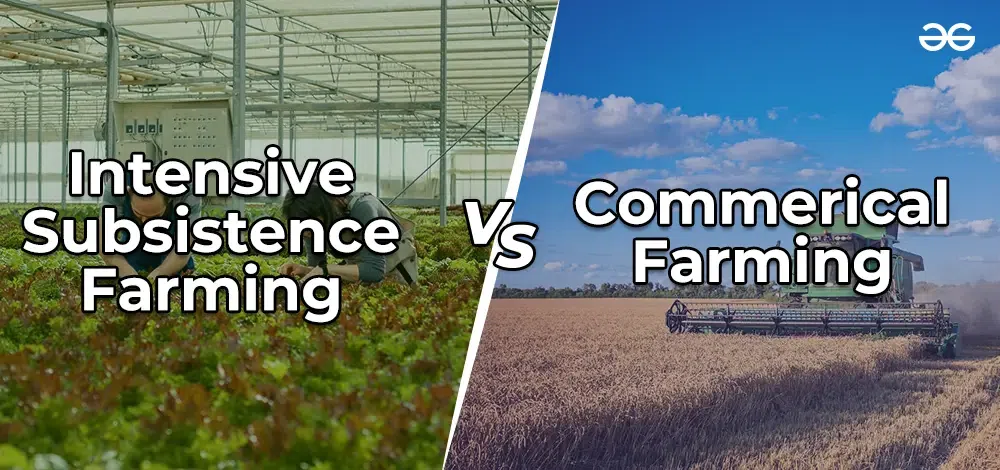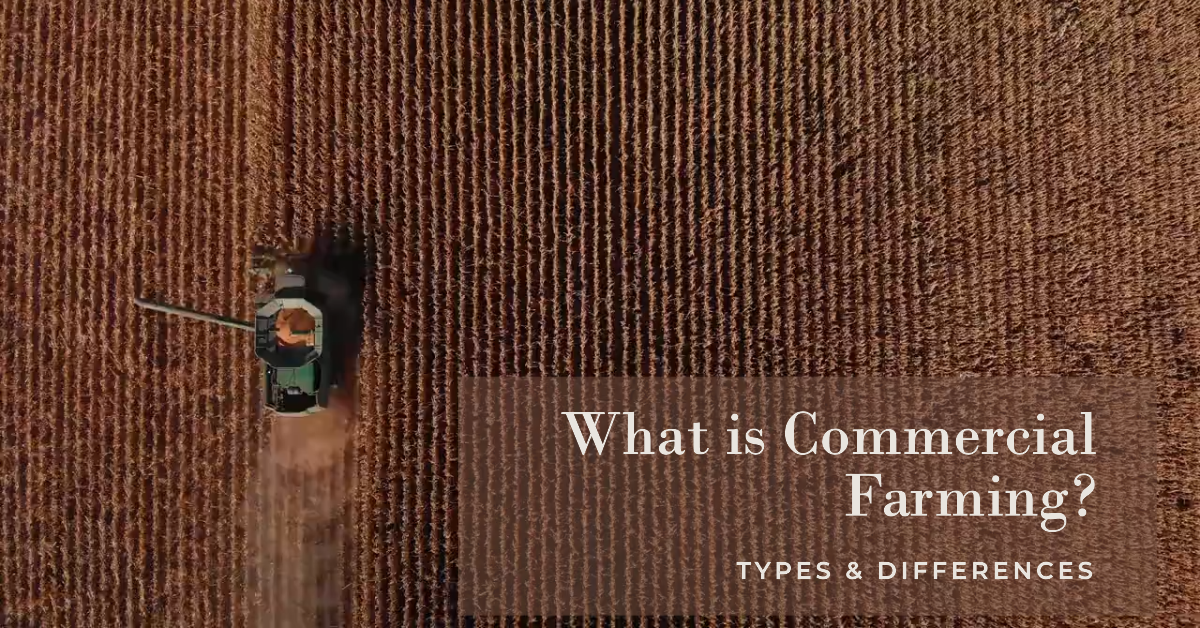Benefits and Challenges of Commercial Farming vs Subsistence Farming Described
Benefits and Challenges of Commercial Farming vs Subsistence Farming Described
Blog Article
A Thorough Look at the Difficulties and Benefits of Modern Agriculture
Modern farming stands at the crossroads of technology and sustainability, offering a wide range of chances and challenges. The course ahead demands a careful examination of these characteristics, inviting stakeholders to take into consideration the possibility for transformative change in farming techniques and plans.
Technological Innovations in Farming
Technologies such as precision biotechnology, agriculture, and automation have transformed standard farming techniques, allowing for more lucrative and sustainable procedures. Precision agriculture makes use of GPS innovation, sensors, and information analytics to maximize field-level monitoring regarding crop farming.
Automation in farming has additionally driven the industry forward, with the introduction of autonomous tractors, drones, and robotics. These innovations decrease labor needs and raise functional rate, enabling prompt growing and harvesting. Drones, in certain, give beneficial airborne imagery and data, assisting farmers in keeping an eye on plant health and wellness and detecting concerns early.
Biotechnology has actually also played a pivotal function in advancing farming techniques. Jointly, these technical advancements have actually laid the groundwork for a more resistant and sustainable agricultural future.
Ecological Challenges
Farming faces numerous environmental obstacles that endanger its sustainability and productivity. Among the primary problems is the deterioration of soil health because of extensive farming practices that diminish important nutrients and bring about erosion. The overuse of chemical plant foods and chemicals additionally exacerbates this issue, infecting water sources and lowering biodiversity. Subsequently, the long-lasting stability of agricultural land is compromised, demanding the adoption of more sustainable techniques.
Water shortage is one more substantial obstacle, specifically in regions where agriculture heavily depends on watering. Climate change is heightening this issue, modifying rainfall patterns and increasing the regularity of dry spells. Effective water administration systems, such as drip watering and rain harvesting, are crucial to reduce these impacts, but their implementation remains uneven across different regions.
Moreover, farming is both a contributor and a victim to environment change. Attending to these environmental challenges is crucial for guaranteeing a lasting agricultural future.

Economic Effects
The financial effects of modern agriculture are multifaceted and extensive, influencing both neighborhood and worldwide markets. Advancements in technology and manufacturing techniques have dramatically boosted agricultural performance, resulting in more reliable food supply chains and minimized expenses for customers. This heightened performance has made it possible for nations to fulfill growing needs, stabilize food costs, and add to economic development. Moreover, the export of farming assets has actually become a considerable resource of income for lots of nations, playing a vital role in their financial advancement.
However, these benefits are not without challenges. The capital-intensive nature of modern farming needs substantial financial investment in equipment, fertilizers, and genetically customized seeds, which can be financially troublesome for small farmers. This commonly leads to enhanced see this page financial obligation and economic susceptability, potentially leading to the loan consolidation of farms and the loss of country incomes. Furthermore, international see market fluctuations can affect the productivity of farming exports, making economies reliant on farming at risk to economic instability.
Furthermore, aids and trade plans in developed countries can distort market prices, influencing competitive equilibrium and potentially disadvantaging farmers in creating countries. Generally, while modern farming drives economic development, it also demands navigating complicated economic landscapes to guarantee fair and sustainable development.
Social Ramifications
While modern-day agriculture has brought about considerable advancements, it also presents various social ramifications that warrant consideration. As business farming entities progressively control the agricultural landscape, smaller farms usually have a hard time to complete, leading to the disintegration of country neighborhoods and standard farming methods.

Furthermore, there are concerns concerning food security and sovereignty. The emphasis on monoculture and genetically changed plants can weaken biodiversity and make food systems extra susceptible to pests and conditions. Such methods might additionally restrict consumer choices and decrease the ability of neighborhood areas to manage their food sources. As these social effects unravel, it becomes vital to address them to guarantee equitable and lasting agricultural development.
Future Directions
Looking ahead, several appealing avenues for contemporary farming might attend to the challenges encountered today while fostering lasting development. Developments in technology, such as precision farming, offer the prospective to optimize resource usage and increase effectiveness. By using data analytics and artificial intelligence, farmers can make educated decisions concerning plant monitoring, resulting in minimized input costs website link and reduced ecological influence. The combination of renewable power sources into agricultural methods might dramatically reduce dependency on fossil fuels and add to decrease greenhouse gas emissions.
Biotechnology additionally holds tremendous pledge for the future of farming. Genetically customized organisms (GMOs) and genetics editing and enhancing strategies, like CRISPR, can enhance crop durability against climate adjustment, pests, and illness, therefore improving food safety and security. Expanding plant varieties to consist of even more climate-resilient and nutrient-dense alternatives might reinforce both ecological security and human nutrition.

Final Thought
Modern agriculture, characterized by technical improvements, provides both possibilities and obstacles. While innovations such as accuracy farming and biotechnology improve productivity and sustainability, they additionally add to environmental concerns like soil degradation and water deficiency. The economic influences are considerable, leading and impacting small farmers to broader social effects. Attending to these intricacies needs a transition towards sustainable techniques that balance performance with environmental stewardship and social equity, therefore making sure a resilient future for worldwide agricultural systems.
Modern agriculture stands at the crossroads of technology and sustainability, offering a plethora of opportunities and obstacles. Furthermore, international market variations can impact the success of agricultural exports, making economic situations reliant on farming prone to economic instability.
In addition, the extensive usage of technology and automation in farming has led to a reduction in farming work chances.Looking ahead, several encouraging avenues for modern agriculture could deal with the difficulties dealt with today while fostering sustainable growth. commercial farming vs subsistence farming.Modern agriculture, defined by technological improvements, offers both obstacles and possibilities
Report this page